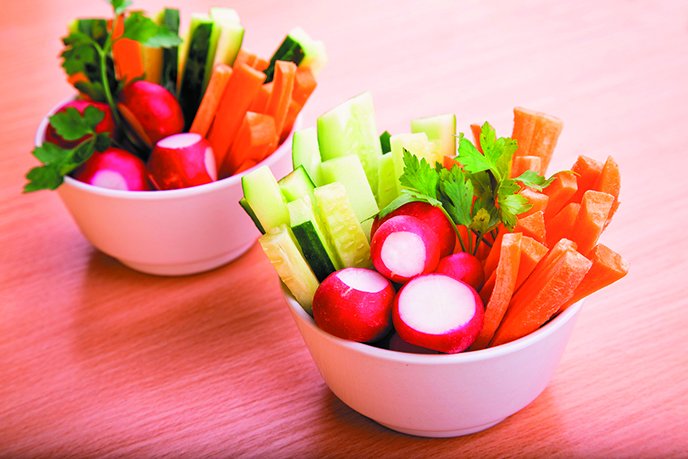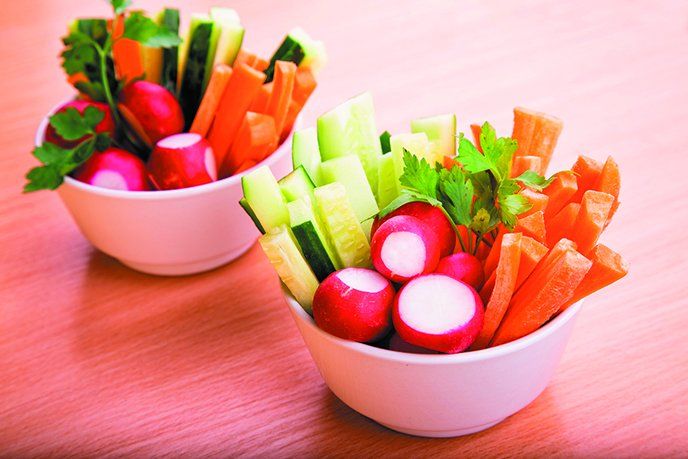Dreamstime.com

It can seem overwhelming to lose weight or get fit, but it doesn’t have to be. How you approach behavior changes to help you reach your health and wellness goals can make a big difference. A key is to gradually change your habits.
“Making lasting changes generally isn’t a quick, big-win approach, like you might hear about in sensational headlines where someone loses a lot of weight fast,” says Sara C. Folta, PhD, an associate professor with expertise in behavioral psychology at Tufts’ Friedman School. “Sustainable changes generally come from taking baby steps toward your goal, rather than from trying to completely overhaul your lifestyle in a short period of time.”
Ready to Change?
To form new health habits, you have to desire a change. “Weighing the ‘pros’ and ‘cons’ of a change is an early step in the process,” Folta says. “It may take twice as many pros to outweigh the cons and move toward change. But, we typically start out with a lot more cons on our list. For example, you may be able to think of five reasons to exercise but 10 reasons not to.”
To tip the balance in favor of change, seek out more benefits that would likely result from the change. To gather this information, you might talk to your health care provider or peers who are already doing what you’re thinking of.
Start Tiny:
Once you’ve tipped the balance in favor of change, start with a small change that feels manageable, Folta says. You’ll be a lot more likely to succeed. When you prove to yourself you can do something, it inspires confidence to continue the behavior, helps you overcome obstacles and helps you make other changes, too.
“A confidence breaker is starting with a change that’s too hard or that you don’t really want to do,” adds BJ Fogg, PhD, a behavior scientist at the Persuasive Tech Laboratory at Stanford University in California. “Start changing in easy and enjoyable ways. As you develop more skill and confidence, you can tackle harder things.”
Fogg teaches people to pick a behavior they want to do, and then break it down so the habits to make it happen are tiny and very doable. For example, if the new behavior you want to adopt is snacking on vegetables, the first tiny habit might be buying vegetables in a ready-to-eat form – such as bagged baby carrots – so they’re ready to grab in the refrigerator.
Identify Cues:
Part of creating a new habit is figuring out what’s going to remind you to do it. “Let something you’re already doing be your reminder for the new habit,” Fogg says. He advises thinking about it in terms of, “After I (fill in an existing habit), I will (fill in the new habit).”
Cues also come into play when you’re trying to change habits. “Many of our unhealthy behaviors are triggered by cues,” Tufts’ Folta says. For example, seeing a coffee shop near the bus stop might be your cue to get a coffee with chocolate and whipped cream. Once you recognize that cue, you can make a better choice, such as to buy a healthier beverage or bring your own coffee – whatever alternate option is appealing to you.
“A lot of people don’t realize what their cues are,” Folta says. “Identifying cues may require some journaling or just being more mindful of what you’re doing. If you’re aware of a cue, you can change your response.”
Sticking With It:
Fogg emphasizes that once you perform a new healthy behavior, no matter how small, you should celebrate. You might do that by saying, “good for me” or by doing a happy dance or a fist pump – something that fires off positive emotions. “Habits are a lot like plants,” he says. “They start small, and if they’re nurtured, they grow naturally to their predestined size.”
It’s also important to manage your environment (like at home and work), to the extent that you can. “Our behavior is largely controlled by what’s around us,” Fogg says. “People can use willpower for a while to resist a food or exercise more, but eventually that fades away. You have to change your environment.” For example, that might mean keeping tempting foods out of the house and stocking the pantry with tasty, healthy alternatives.
We have what’s called a default bias. “That means we prefer what we know or what’s easy,” Folta says. “So, do what you can to make the default option the healthy option. For example, at home, make healthier foods easier to grab.”
“Changing our behaviors and reaching health goals isn’t an all-or-nothing approach,” Folta concludes. “Make small changes and be patient with the process.”
To learn more: NIH: Changing Your Habits for Better Health
What if a family member or friend needs to change their diet or lifestyle for better health? Supporting them is important, but it has to be done appropriately. Tufts’ Folta offers these pointers:
– Avoid nagging.
It may discourage someone from making a change.
– Quietly lead by example.
This can be especially helpful if the people youre trying to influence view you as similar to them. But don’t boast about how great you feel since you made a change. Let others observe your success and its benefits. Seeing you successfully change can increase other people’s confidence for change.
– Give people the support they need.
Don’t assume you know what would be helpful. For example, buying them workout equipment isn’t helpful when they just want some free time to go for a walk. If that’s the case, you might offer to take a household chore off their hands.
– Ask permission before you share advice.
Giving people unsolicited advice can be a turnoff. Instead, bring up a topic that might be helpful by asking, “Would you be interested in hearing about ?” If they say no, drop it.
– Don’t overwhelm.
If someone does seek advice, limit it to small bits of information at a time.





















